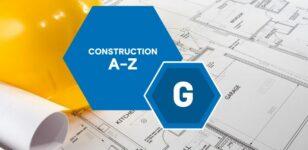Since the tragic fire at Grenfell Towers in 2017, the regulation within the UK’s construction industry and particularly the use of cladding came under scrutiny. In response, the government has introduced a number of measures including, and most recently, the Building Safety Act 2022 (the Act). Although, only time will tell as to whether the Act will be a catalyst for much-needed change in the construction industry.
From the outset, it is worth noting that a number of the Act’s provisions will not come into effect for another 12 to 18 months, as secondary legislation is drawn, and may therefore be taken as a work in progress. This blog seeks to highlight some key takeaways from the Act, focusing on issues surrounding cladding.
- It is apparent from the Act that the Government has attempted to distribute accountability amongst all those involved in the design and build of higher-risk buildings (HRB). Under the Act, parties including, but not limited to, architects, builders, manufacturers and suppliers will now all have increased liability. Indeed, the Act introduces new causes of action which enable claims to be brought against construction product manufacturers and sellers. The limitation period for bringing such claims has now been extended up to 15 years from which date the right accrued. HRB owners will also welcome the extension to the limitation period for defective cladding products, with the period being 15 years prospectively and 30 years retrospectively.
- The Act also enables those with an interest, limited by the Act’s definition of an “interested person”, to make an application for a Contribution Order. In circumstances where it deems it just and equitable to do so, the first-tier tribunal can order a specified body to contribute towards costs incurred or those to be incurred in remedying relevant defects. Whilst not concerning the Act directly, as recent as July 2022, we have already seen the court demonstrate that it is prepared to find in favour of a building owner seeking approximately £8,000,000 associated with the costs of investigating, removing and replacing defective cladding installed back in 2005. We consider the case of Martlet Homes Ltd v Mulalley & Co Ltd in another article.
- Another welcomed addition under the Act is the introduction of several new duty holder roles including an ‘accountable person’. An accountable person will hold a set of statutory obligations relating to the fire and structural risks within an HRB. The Act is relatively limited in setting out the duties that are placed upon accountable persons and we can expect further guidance in the coming months.
With further provisions expected to be implemented into the Act over the upcoming months, those involved in the design and construction of an HRB including manufacturers should keep a close eye on the developments.
Whether you are an HRB owner or are involved in a safety dispute as the design and construction team of an HRB, and you have any questions or concerns, please contact our specialist property litigation lawyers by emailing online.enquiries@la-law.com.

























































